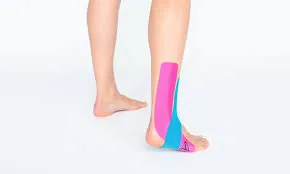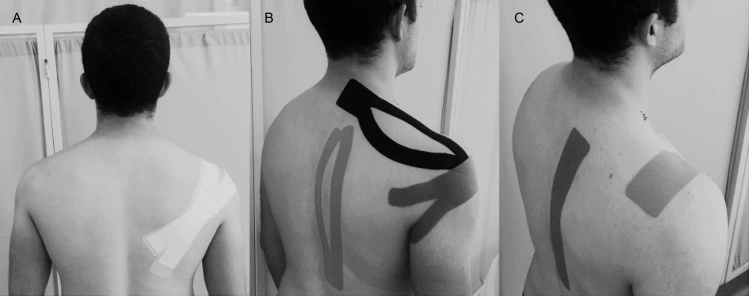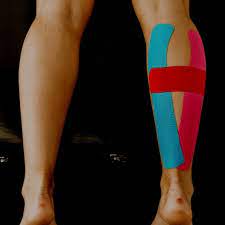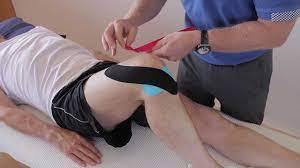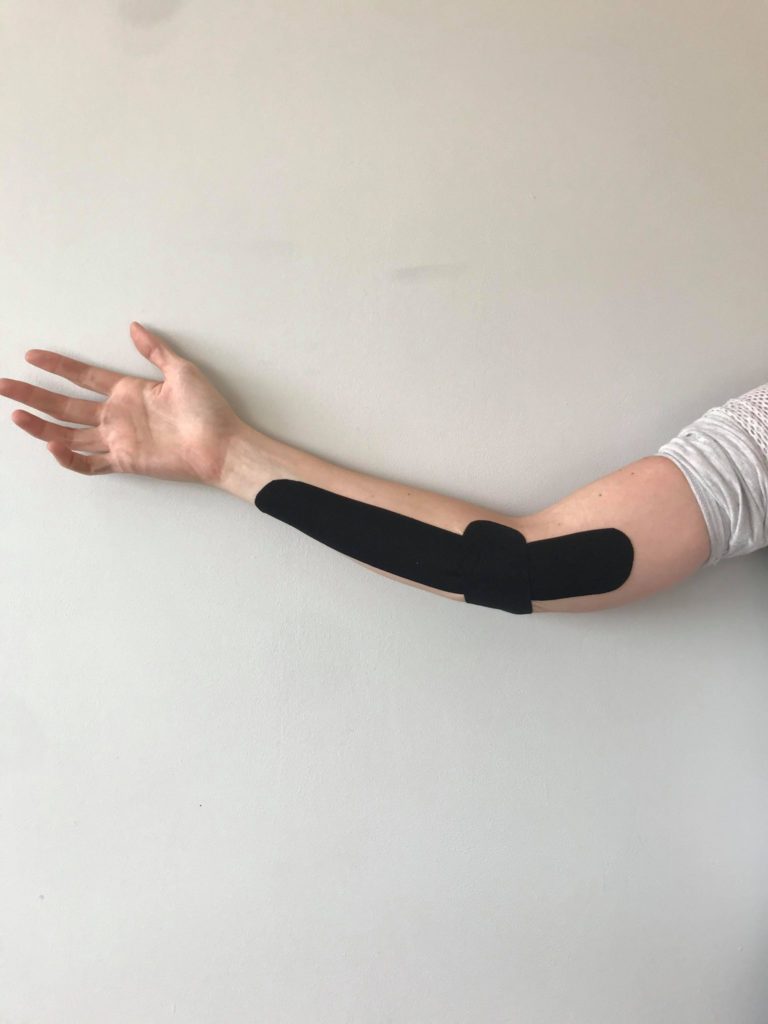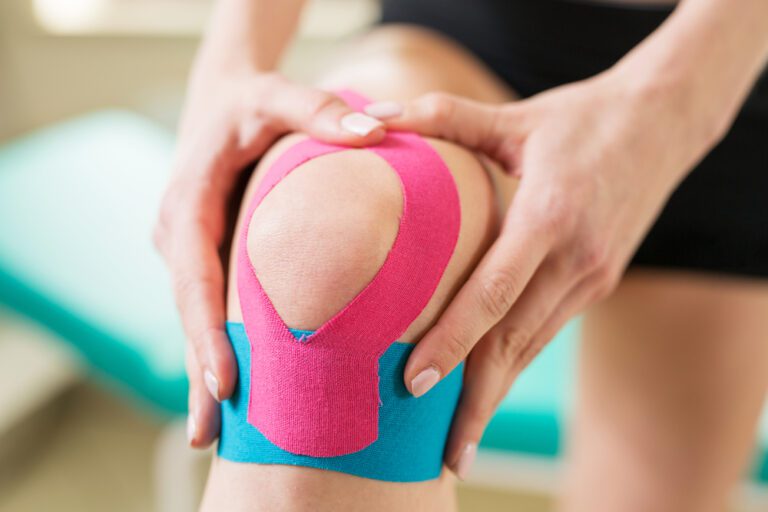Kinesio taping for peroneal tendinitis
Table of Contents
Introduction :
kinesio taping for peroneal tendinitis is a most used technique to relieve pain and further support to involve the area and prevent further injury to the ankle. This is the most effective and protective treatment. kinesio taping gives static as well as dynamic support to the affected area. kinesio taping gives dynamic stability to the joint while typical taping gives static stability to the hip.
it’s known as called kinesiology tape recording or kinesiology therapeutic tape recording. is an elastic cotton strip with an acrylic adhesive that’s purported to ease pain and disability from athletic injuries and a variety of other physical diseases.
Kinesiological tapping could be a rehabilitative cum defending use of elastic kinesiological tapes to supply :
- reduction in pain
- enhancing performance of ankle joint
- preventing any injuries
- support to the involved area
- repositioning of structure
- facial and ligamentous correction.
Peroneal tendinitis is a condition that can be acute or turn chronic( peroneal tendinopathy) whereby there is an aggravation to one or both peroneal tendons with subsequent degeneration and inflammation.
Peroneal tendonitis is a common cause of pain around the reverse and outside of the bottom due to injury or damage to the tendons. The peroneal tendons are strong, cord- suchlike structures that link the peroneal muscles of the calf to the bones of the bottom.
Tendonitis occurs when micro tears affect tendon damage and inflammation, leading to pain and difficulty walking. According to Physicians, when tendonitis occurs, people frequently experience pain and swelling around the reverse and outside of the bottom. Other symptoms include popping and the feeling of ankle insecurity.
The pain is generally worse with exercise, comes on sluggishly, and gets increasingly worse over time. The most common cause is overuse pain.
This injury is common in runners and other athletes whose sports require repetitious stir of the ankle or bottom.
Relevant anatomy :

- The peroneal two tendons are in the lateral compartment of the leg and include the peroneus longus and peroneus brevis muscles.
- Both enter innervation from the superficial peroneal nerve and blood supply from the peroneal arterial.
- The peroneus brevis muscle originates on the lateral aspect of the distal fibula and intermuscular septum and inserts onto the base of the fifth metatarsal.
- The peroneus longus muscle originates at the proximal fibula and lateral tibia and inserts at the base of the first metatarsal and the medium cuneiform.
- The tendons immerse a common synovial covering that runs posterior to the distal fibula, onetime past the fibula they each have their own synovial covering.
- They run in a cave framed by the superior peroneal retinaculum, the posterior fibula that has a retromalleolar groove, and the calcaneofibular ligament.
- The tendon relationship at the position of the ankle is the peroneus brevis anterior and medium to the peroneus longus. sometimes anomalous deconstruction can lead to a peroneal disease analogous as low lying brevis muscle belly or the presence of peroneus quartus muscle.
- The peroneus quartus muscle most generally runs from the peroneus brevis to the retrotrochlear eminence of the calcaneus and is associated with peroneus brevis incisions and subluxation.
Causes of peroneal tendinitis :
Repeated running on inclined traces can generate peroneal tendonitis as your foot rolls outward, the friction increases between the tendon and the bone, and this overpronation can increase the strain between the tendon and the bone.
Marathoners or long-distance runners generally get peroneal tendonitis from the repetitious stir of running long distances.
Tight calf muscles increase the strain on the tendons and cause them to rub further which can generate peroneal tendonitis.
People who have intermittent ankle sprains are more likely to develop peroneal tendonitis because the ankle is weaker around
the injury.
Other contributing factors :
- elderly age.
- Being overweight.
- Diabetes has been linked to an increased danger of developing Peroneal tendinopathy.
- Inflammatory conditions i.e. rheumatoid arthritis, psoriatic arthritis, etc.
- Weakness and/ or tightness in the muscles within your bases or leg.
- Wearing unsupportive footwear similar to sandals.
- Spending long Ages of time standing, walking or running, especially with an unexpected increase in these activities.
- Poor exercising or training methodology and lack of recovery between activities.
- continuous use of oral corticosteroids and a particular family of antibiotics( fluoroquinolones).
- prior foot and ankle surgery/ trauma.
- Smoking.
Symptoms of peroneal tendinitis :
- Pain in the ankle joint that gets worse during physical activities like sports
- inflammation in the around ankle joint
- Pain when the ankle is rotated in the direction
- Warm sensation in the ankle area
- Ankle instability
Taping technique :
Developed by. Kenzo Kase in 1979. The Kinesio Taping Method is the definitive rehabilitative taping system of knowledge and is designed to facilitate the body’s natural recovery process while furnishing support and stability to muscles and joints without restricting the body’s range of movement, as well as supplying extended soft tissue manipulation to prolong the benefits of manual therapeutic administered within the clinical setting.
Latex-free and wearable for days at a time, Kinesio Tape is safe for populations ranging from pediatric to the elderly, and successfully treats a variety of orthopedic, neuromuscular, neurological, and other medical conditions.
The Kinesio Taping The methodology is a therapeutic taping technique not only offers you the support you are looking for but also assists in the rehabilitation of injury and physiological dysfunction. also, we used two types of taping ways.
Kinesio Tape can reduce pain and speed the recovery process by increasing circulation, supplying stability, and relieving the pressure on the inflamed and painful tendon.
What do you need?
- 2 full strips of Kinesio tape
- Apply before exercise
- Apply one hour before beginning the exercise
- Clean skin
- Clean dirt, oils, and creams from the area
- Activate adhesive
- After application rub, tape recording energetically to activate adhesive
- body position
- Position the ankle at a 90- degree angle.
Application of Kinesio tape :
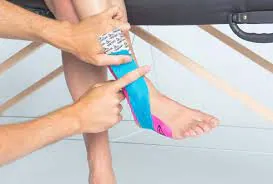
strip 1:
A) 0 stretch Anchor a full strip on the inside heel without stretch on tape recording as shown.
B) 50 stretch Apply the tape recording around the bottom of the heel and up to the point of pain with 50 stretches.
C) 0 stretch Apply the last two inches of the tape recording without stretch.
Strip 2 :
A) 0 stretch Anchor a full strip or the inside bow without stretch on the tape recording.
B) 50 stretch Apply the tape recording around the heel to the outside of the foot with 50 stretches.
C) 0 stretch Apply the test two inches without stretch.
How to remove tape?
- When removing the tape, it’s important to secure you do not just tear it off as you could damage your skin and produce aggravation.
- To begin, secure you are removing the product in the direction of your hair growth, to lessen any discomfort experienced. Ease it off carefully, folding the edge of the tape recording back sluggishly.
- Make sure to check that you are shelling the removed tape recording back against the still-applied tape recording at an angle, as opposed to just ripping it off.
- With your other hand, pull your skin tense and pull gently but forcefully in the opposite direction of the applied tape, to help in the separation of skin and tape and to secure minimal discomfort.
- If you haven’t shaved before applying the tape and the area of the body you have treated has a lot of hair growth, it’s a good idea to press down firmly on the tape as you’re shelling it back, in order to reduce pain.
- on the other hand, you can apply a tenacious dissolving agent like baby oil painting, rubbing it in and leaving for roughly 5 twinkles, before trying to remove the tape sluggishly.
- This will lessen the stickiness and secure a smooth removal, with no pain. Always use a product like baby or olive oil to remove Kinesio or rigid tape if you have sensitive skin or are prone to aggravation.
- When you need to remove Kinesio or rigid tape, take care to pull it gently and at a slight angle, in the direction of any hair growth, pulling your skin tight with your other hand.
- Doing it this way will minimize any discomfort or pain and will insure your skin isn’t listed as the tape is removed.
- You can encourage easier removal by stretching the skin behind the tape with a fingertip. When you need to remove Kinesio or rigid tape, take care to pull it gently and at a slight angle, in the direction of any hair growth, pulling your skin tense with your other hand.
- Doing it this way will minimize any discomfort or pain and will ensure your skin isn’t listed as the tape is removed.
- You can encourage easier junking by stretching the skin behind the tape with a fingertip.
- However, cover the tape with a dissolving If you have sensitive skin or want an indeed gentle removal. an agent like olive oil or baby oil, leave for a few minutes and also ease the product off precisely.
KT Taping Video for Peroneal Tendonitis
FAQ
Is Kinesio taping well for peroneal tendinitis?
Yes, Kinesio taping for peroneal tendinitis is a most used technique to relieve pain and further support to involve the area and prevent further injury. This is the most effective and protective treatment. kinesio taping gives static as well as dynamic support to the affected area.
What are the five benefits of Kinesio taping?
1)decrease pain
2)increases circulation and decreases inflammation
3)improve the muscle support
4)improve athletic performance
5)supported endogenous analgesic systemHow long you can keep Kinesio taping on?
Once a physical therapist or sports medicine provider positions the tape, it can remain on the skin as long as the adhesive works, usually for two or three days. The adhesive is strong enough to withstand approved activities, showers, and daily life movements. Of course, if the adhesive causes itching, rash, or other types of discomfort, the tape should be removed
Where do you put KT Tape on peroneal tendonitis?
A) 0 stretch Anchor a full strip on the inside heel without stretch on tape recording as shown.
B) 50 stretch Apply the tape recording around the bottom of the heel and up to the point of pain with 50 stretches.
C) 0 stretch Apply the last two inches of the tape recording without stretch.
strip 2
A) 0 stretch Anchor a full strip or the inside bow without stretch on the tape recording.
B) 50 stretch Apply the tape recording around the heel to the outside of the foot with 50 stretches.
C) 0 stretch Apply the test two inches without stretch.How long does it take for Kinesio taping Tape to start working?
The tape can usually stay in place for three or four days even while showering or exercising. Positive results are reported to be felt within twenty-four hours for many users of kinesiology tape.

